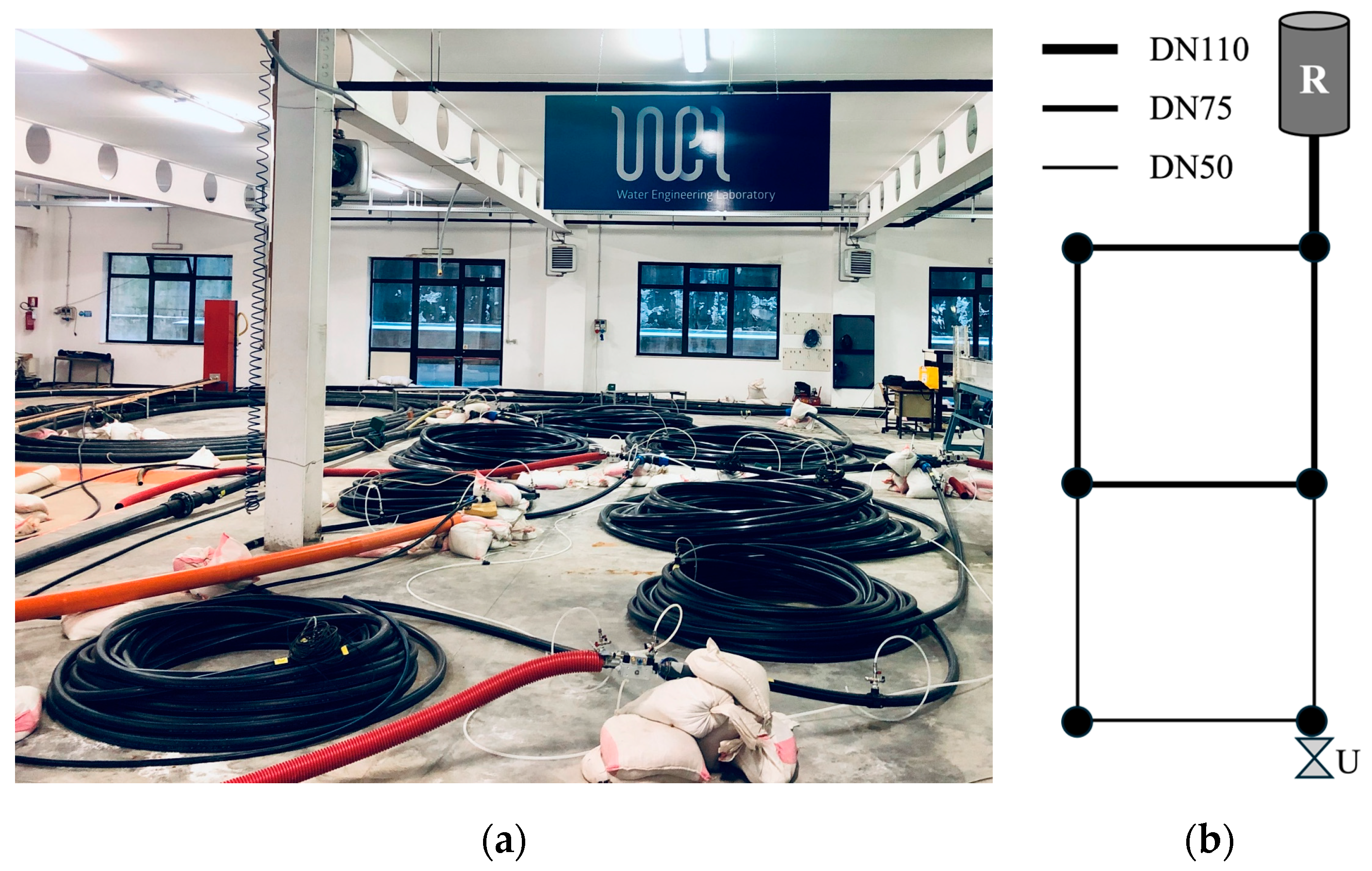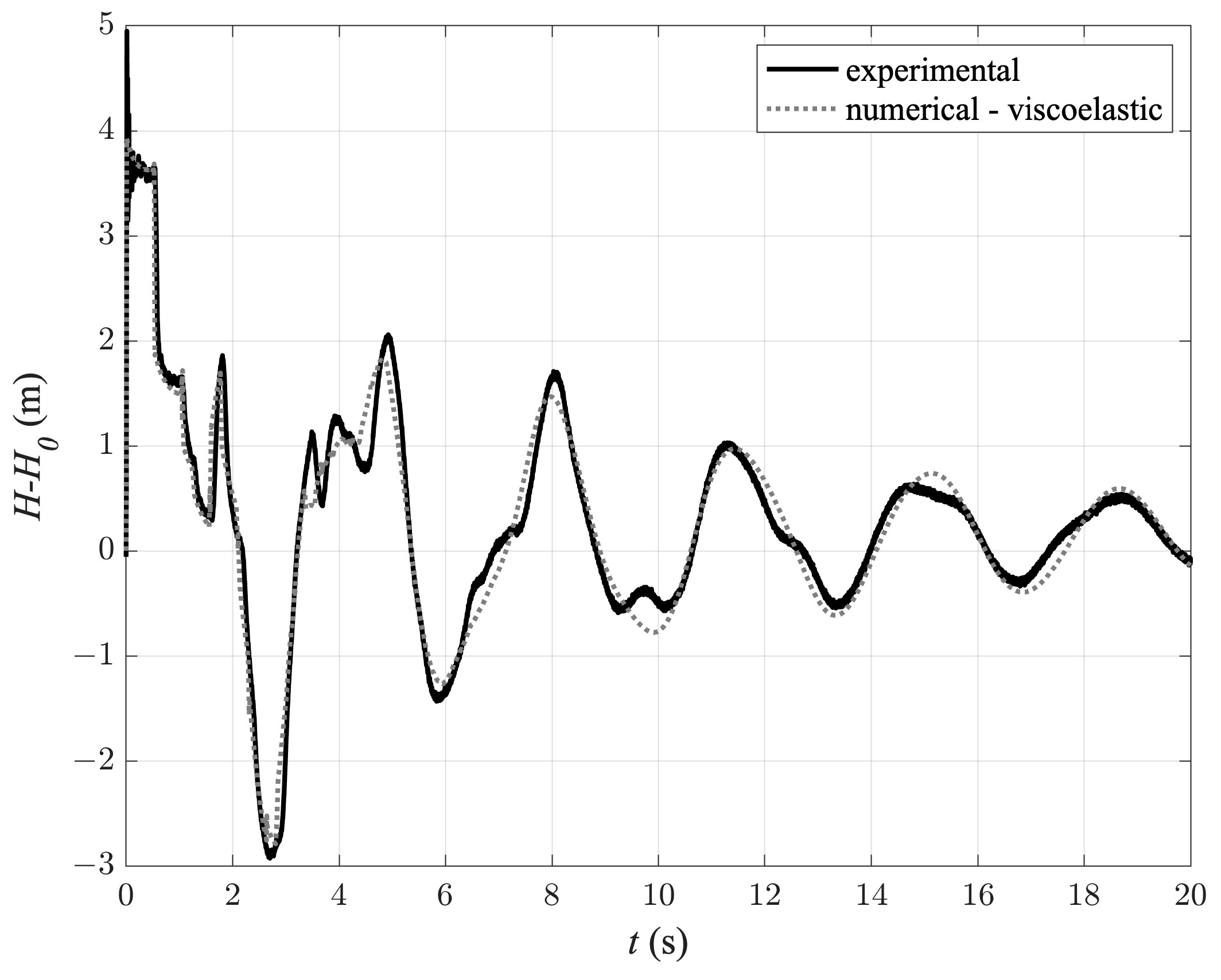Admittance Matrix Method for Modeling Transients in a Laboratory Water Network †
Abstract
:1. Introduction
2. Laboratory Setup and Transient Test
3. Frequency-Domain Modeling of Transient Test
4. Conclusions
Author Contributions
Funding
Institutional Review Board Statement
Informed Consent Statement
Data Availability Statement
Conflicts of Interest
References
- Zecchin, A.C.; Simpson, A.R.; Lambert, M.F.; White, L.B.; Vítkovský, J.P. Transient modeling of arbitrary pipe networks by a Laplace-domain admittance matrix. J. Eng. Mech. 2009, 135, 538–547. [Google Scholar] [CrossRef]
- Capponi, C.; Ferrante, M.; Zecchin, A.C.; Gong, J. Leak detection in a branched system by inverse transient analysis with the admittance matrix method. Water Resour. Manag. 2017, 31, 4075–4089. [Google Scholar] [CrossRef]
- Meniconi, S.; Maietta, F.; Alvisi, S.; Capponi, C.; Marsili, V.; Franchini, M.; Brunone, B. Consumption Change-Induced Transients in a Water Distribution Network: Laboratory Tests in a Looped System. Water Resour. Res. 2022, 58, e2021WR031343. [Google Scholar] [CrossRef]
- Tjuatja, V.; Keramat, A.; Pan, B.; Duan, H.F.; Brunone, B.; Meniconi, S. Transient flow modeling in viscoelastic pipes: A comprehensive review of literature and analysis. Phys. Fluids 2023, 35, 081302. [Google Scholar] [CrossRef]
- Pezzinga, G.; Brunone, B.; Cannizzaro, D.; Ferrante, M.; Meniconi, S.; Berni, A. Two-dimensional features of viscoelastic models of pipe transients. J. Hydraul. Eng. 2014, 140, 04014036. [Google Scholar] [CrossRef]
- Meniconi, S.; Rubin, A.; Tirello, L.; Doro, A.; Brunone, B.; Capponi, C. Mapping pressure surge source in urban water networks: Integrating low- and high-Frequency pressure data with an illustrative real case study. Water Resour. Res. 2024, 60, e2023WR036773. [Google Scholar] [CrossRef]



Disclaimer/Publisher’s Note: The statements, opinions and data contained in all publications are solely those of the individual author(s) and contributor(s) and not of MDPI and/or the editor(s). MDPI and/or the editor(s) disclaim responsibility for any injury to people or property resulting from any ideas, methods, instructions or products referred to in the content. |
© 2024 by the authors. Licensee MDPI, Basel, Switzerland. This article is an open access article distributed under the terms and conditions of the Creative Commons Attribution (CC BY) license (https://creativecommons.org/licenses/by/4.0/).
Share and Cite
Capponi, C.; Falocci, D.; Brunone, B.; Zecchin, A.; Meniconi, S. Admittance Matrix Method for Modeling Transients in a Laboratory Water Network. Eng. Proc. 2024, 69, 116. https://doi.org/10.3390/engproc2024069116
Capponi C, Falocci D, Brunone B, Zecchin A, Meniconi S. Admittance Matrix Method for Modeling Transients in a Laboratory Water Network. Engineering Proceedings. 2024; 69(1):116. https://doi.org/10.3390/engproc2024069116
Chicago/Turabian StyleCapponi, Caterina, Debora Falocci, Bruno Brunone, Aaron Zecchin, and Silvia Meniconi. 2024. "Admittance Matrix Method for Modeling Transients in a Laboratory Water Network" Engineering Proceedings 69, no. 1: 116. https://doi.org/10.3390/engproc2024069116







